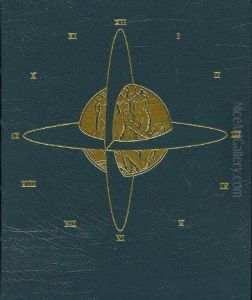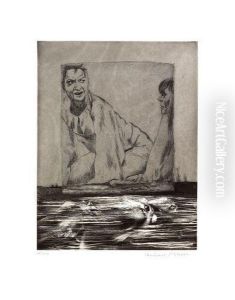James Joyce Paintings
James Joyce, a towering figure in the world of literature, was born on February 2, 1882, in Dublin, Ireland. As one of the most influential and innovative writers of the 20th century, Joyce's work is celebrated for its profound exploration of the human psyche, its experimental use of language, and its deep roots in the complex social, cultural, and political fabric of Ireland. Joyce's upbringing in a middle-class Irish family, his education at Jesuit schools, and his subsequent rejection of Catholicism profoundly influenced his writing and themes.
Joyce left Ireland in 1904, embarking on a life of self-imposed exile across Europe, living in cities such as Trieste, Zürich, and Paris. This expatriate life, marked by financial difficulties, health problems, and the challenges of his daughter Lucia's mental health, deeply informed his depiction of alienation and exile. Despite these hardships, Joyce's literary output continued unabated, supported by patrons, including Harriet Shaw Weaver and the efforts of Ezra Pound.
His most notable works include 'Dubliners' (1914), a collection of short stories that paint a vivid picture of life in Dublin at the turn of the century; 'A Portrait of the Artist as a Young Man' (1916), a semi-autobiographical novel that charts the intellectual and spiritual development of Stephen Dedalus, Joyce's alter ego; 'Ulysses' (1922), a groundbreaking novel that employs stream of consciousness, parody, puns, and almost every literary device known to paint a day in the life of Dubliner Leopold Bloom; and 'Finnegans Wake' (1939), a complex work of astonishing linguistic inventiveness that explores the cyclical nature of history and language.
Joyce's influence on the modernist movement cannot be overstated, with 'Ulysses' in particular being hailed as a monumental achievement in modern literature. However, his work was not without controversy, facing censorship and legal battles over obscenity charges. Despite these challenges, Joyce's vision and mastery of language have earned him a permanent place in the literary canon. He died on January 13, 1941, in Zürich, Switzerland, but his work continues to be celebrated and studied for its innovative techniques, depth of insight, and its profound impact on the development of 20th-century literature.



